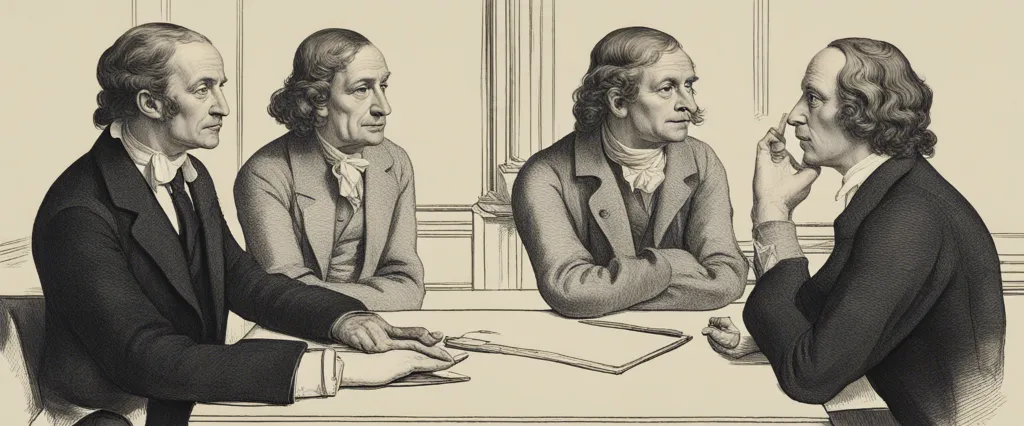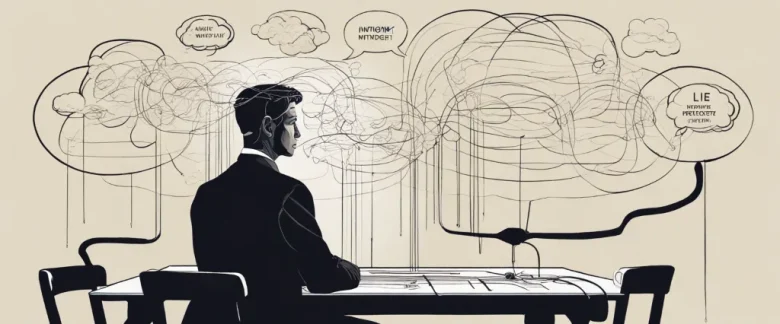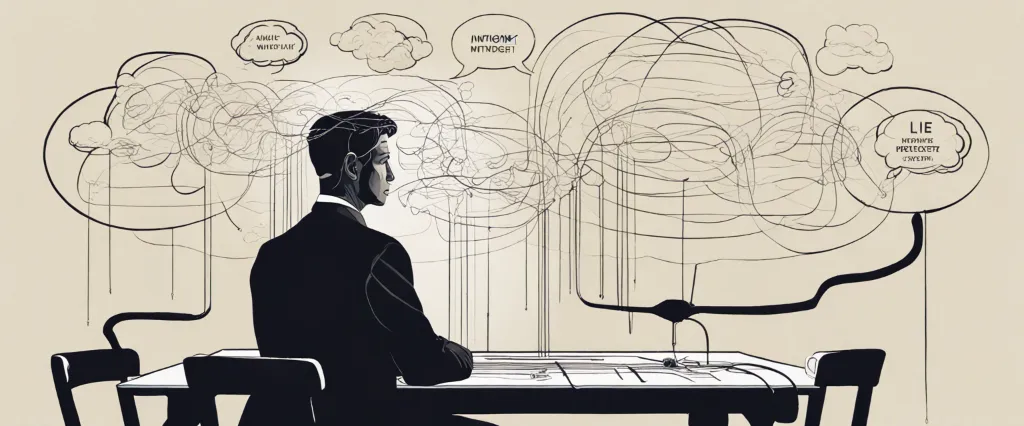In “Telling Lies,” renowned psychologist Paul Ekman delves into the intricate world of deception, offering readers a captivating insight into the art of recognizing and understanding deceitful behavior. With his vast expertise in the field of nonverbal communication, Ekman guides us through an intriguing exploration of the countless ways people attempt to conceal the truth. Having spent decades researching facial expressions and emotions, the author has become a leading authority on the subject, famously inspiring the hit TV series “Lie to Me.” In this fascinating book, Ekman uncovers the secrets behind our most elaborate lies, providing readers with invaluable tools to decipher truth from falsehood.
Chapter 1: The Mystery of Body Language: Revealing Microexpressions
Chapter 1 of “Telling Lies” by Paul Ekman, titled “The Mystery of Body Language: Revealing Microexpressions,” delves into the concept of microexpressions and their significance in understanding human emotions and detecting lies. Ekman begins by describing his groundbreaking research on facial expressions, which led him to identify seven universal emotions that are expressed through specific facial movements irrespective of cultural differences.
The chapter explains how microexpressions are fleeting facial expressions that occur involuntarily, lasting for a fraction of a second and often revealing true emotions that an individual might be attempting to hide. Ekman highlights the challenge of decoding these microexpressions due to their rapid and subtle nature, emphasizing the need for trained observation and analysis.
The significance of microexpressions lies in lie detection, as they can expose moments when the truth slips through the mask put up by individuals attempting to conceal their true emotions. Ekman elaborates on various factors that contribute to identifying microexpressions, such as timing, context, and the occurrence of particular emotions. Understanding microexpressions can help determine whether someone is withholding information or deliberately attempting to deceive.
Furthermore, Ekman touches on the connection between emotions and deception, explaining that while not all expressions of emotion are indicative of lying, lies often trigger specific emotions such as fear, guilt, or excitement. Detecting these emotions through microexpressions can increase the accuracy of lie detection.
In summary, Chapter 1 of “Telling Lies” introduces the concept of microexpressions and their crucial role in decoding human emotions and detecting lies. Ekman’s research has demonstrated that these fleeting facial expressions offer valuable insights into an individual’s true emotions, highlighting their significance in both lie detection and understanding the intricacies of human communication.
Chapter 2: The Key to Detecting Lies: Facial Expressions and Eye Movements
Chapter 2 of “Telling Lies” by Paul Ekman explores the key factors in detecting lies through the analysis of facial expressions and eye movements. Ekman begins by emphasizing the importance of utilizing both verbal and nonverbal cues when attempting to uncover deception.
The chapter first delves into the concept of micro-expressions, which are brief facial expressions that occur involuntarily and reveal concealed emotions. These fleeting expressions, often lasting for only a fraction of a second, are crucial to detecting deception. Ekman explains that despite an individual’s efforts to suppress or mask their true emotions, these micro-expressions often betray their underlying feelings.
Furthermore, Ekman explores the significance of eye movements in detecting lies. Eye contact and gaze patterns can provide insight into a person’s truthfulness. For instance, prolonged eye contact or sustained eye aversion may indicate deception. Additionally, rapid blinking or dilated pupils could suggest heightened stress or anxiety, potentially indicating dishonesty.
Moreover, the chapter emphasizes the importance of establishing a baseline for comparison. By establishing a person’s typical pattern of facial expressions and eye movements in non-threatening scenarios, one can better identify deviations from their normal behavior, which might indicate the presence of deception.
While Ekman acknowledges that these nonverbal cues can be indicative of deception, he makes a point to highlight that these cues are not foolproof. Ultimately, detecting deception is a complex process, and one must consider multiple factors, such as context and corroborating evidence, when making judgments regarding truthfulness.
In summary, Chapter 2 of “Telling Lies” by Paul Ekman emphasizes the significance of facial expressions and eye movements in detecting lies. By understanding micro-expressions and eye contact patterns, one can gain valuable insights into a person’s truthfulness. However, it is essential to remember that nonverbal cues are just one piece of the puzzle, and careful consideration of the overall context is necessary for accurate deception detection.
Chapter 3: Clues in Speech: Verbal Habits and Qualifiers
Chapter 3 of “Telling Lies” by Paul Ekman explores the hidden meaning behind verbal habits and qualifiers as clues to deception. Ekman posits that individuals, even skilled liars, often leak information and engage in verbal patterns that can reveal their deceit.
One such verbal habit is called “disclaimers,” where people use statements that might seem contradictory or unnecessary as a defense mechanism. Disclaimers can include phrases like “to be honest,” “I shouldn’t say this,” or “I could be wrong.” These verbal cues may indicate the speaker’s awareness of the upcoming lie, hinting at their inner conflict between honesty and deception. By paying attention to these disclaimers, one can detect potential deception.
Another aspect discussed is “hedging,” where individuals use language to soften potentially false statements. Hedging can manifest as vague or ambiguous wording, exaggerations or omissions, or phrases like “I believe” or “I think.” These qualifiers serve as red flags because they indicate a level of uncertainty, suggesting the speaker may be trying to conceal the truth.
Moreover, Ekman highlights the tactic of “qualification,” where people attempt to reduce the strength of their statements by adding modifiers or conditions. For instance, someone might say, “I’m not an expert, but…” or “It’s not my place to say, but…” This pattern is often used to protect oneself from the consequences of telling a lie, implying a lack of confidence or veracity.
Overall, Chapter 3 emphasizes the importance of scrutinizing verbal habits and qualifiers to uncover deception. By recognizing patterns like disclaimers, hedging, and qualification, one can enhance their ability to detect dishonesty and have a better understanding of the hidden messages in people’s speech.
Chapter 4: Decoding Nonverbal Signals: Posture, Gestures, and Body Movements

Chapter 4 of the book “Telling Lies” by Paul Ekman focuses on decoding nonverbal signals related to posture, gestures, and body movements. Ekman emphasizes that understanding these cues is crucial for accurately assessing others’ emotions and intentions.
The chapter begins by examining how posture can reveal valuable information about a person’s state of mind. Ekman highlights the significance of open and closed postures, as open postures suggest confidence, while closed postures indicate defensiveness or discomfort. He also discusses the role of mirroring, where people unconsciously mimic each other’s postures in social interactions.
Moving on to gestures, Ekman underscores the importance of microexpressions, which occur fleetingly and unveil genuine emotions before individuals can mask them. These subtle gestures, which only last fractions of a second, can expose concealed feelings even when someone is attempting to deceive others. Ekman advises readers to pay attention to these fleeting expressions to detect underlying emotions accurately.
Furthermore, the chapter delves into illustrative gestures, which are movements that accompany speech. These gestures can be particularly revealing as they often occur without conscious control and can convey more truthful information compared to words alone. Understanding illustrative gestures can help decipher the sincerity or deception hidden within verbal statements.
Ekman concludes the chapter by discussing body movements, such as fidgeting or freezing. These movements can indicate discomfort or deception, as deceptive individuals may try to suppress natural movements associated with stress and anxiety. The author advises readers to observe clusters of body movements rather than single cues to avoid misinterpretation.
In summary, Chapter 4 of “Telling Lies” emphasizes the importance of decoding nonverbal signals related to posture, gestures, and body movements. Through vigilant observation and understanding of these cues, individuals can gain valuable insights into others’ emotions and intentions, avoiding deception and enhancing interpersonal communication.
Chapter 5: Fluctuations of Emotions: Emotional Expressions and Emotional Management
Chapter 5 of “Telling Lies” by Paul Ekman focuses on the concept of emotional fluctuations, exploring emotional expressions and their management. Ekman explains that while emotions are fleeting, their outward manifestations can be observed and studied.
Emotional expressions play a crucial role in communication, providing valuable information about a person’s inner state and intentions. Ekman delves into the various emotions and their corresponding facial expressions, such as anger, fear, sadness, happiness, surprise, and disgust. He emphasizes the universality of these expressions, suggesting that they are innate and cross-cultural. Ekman’s research involves studying photographs and videos of people from different cultures, seeking to identify consistent patterns and reliable cues for each emotion.
Understanding emotional fluctuations is not only important for accurately recognizing others’ emotions but also for managing our own emotions effectively. Ekman discusses emotional regulation, describing different strategies individuals employ to control or manipulate their emotions. Some people may mask or suppress their true feelings, presenting a false front to the world. Others may intensify their emotions for various reasons, such as when acting in a theatrical performance or exerting social influence. Ekman notes that certain individuals may be more skilled in concealing or altering their emotional expressions, while others give away their true emotions more easily.
Throughout the chapter, Ekman emphasizes the significance of context and culture in emotional expressions. He acknowledges that certain norms and display rules exist within different societies, shaping how emotions are exhibited and managed. This cultural influence highlights the complexity of emotional fluctuations and the importance of considering individual and contextual factors when interpreting emotional expressions accurately.
Chapter 6: The Secrets of Voice: Tone, Volume, and Speech Rate
In Chapter 6 of the book “Telling Lies,” author Paul Ekman explores the secrets of voice, which include tone, volume, and speech rate, in order to uncover the hidden emotions and intentions behind someone’s words. Ekman elucidates how these vocal cues can reveal valuable information about a person’s true thoughts and feelings.
Firstly, Ekman emphasizes the significance of tone. He explains that tone carries emotional significance and can expose underlying attitudes and intentions. For instance, a sarcastic tone may reveal hidden anger or contempt, while a gentle and soothing tone might indicate affection or tenderness.
Secondly, Ekman delves into volume as a vital indicator of one’s inner state. He explains that loudness often signifies dominance, strength, or anger, while low volume may indicate vulnerability or submission. Volume can also be used to manipulate others, as people adjust their volume strategically to influence or control those around them.
Lastly, Ekman examines speech rate, which refers to how fast or slow someone speaks. He notes that rapid speech could demonstrate excitement, anxiety, or deceit, while slower speech might indicate caution, thoughtfulness, or possibly an attempt to deceive by appearing more deliberate.
Throughout the chapter, Ekman provides numerous examples and anecdotes from his research and experiences to illustrate the practical application of understanding voice cues. He emphasizes that combining the analysis of vocal cues with other nonverbal and verbal behaviors can enhance one’s ability to detect deception or hidden emotions accurately.
In conclusion, Chapter 6 of “Telling Lies” delves into the secrets hidden within voice cues, including tone, volume, and speech rate. Ekman asserts that paying attention to these vocal elements can offer valuable insights into a person’s true emotions, intentions, and potential deception. By understanding and analyzing these vocal cues, individuals can improve their ability to decipher the hidden messages beneath the surface of spoken words.
Chapter 7: Face-to-Face Communication: Eye Contact and Subtle Interactions
In Chapter 7 of “Telling Lies,” titled “Face-to-Face Communication: Eye Contact and Subtle Interactions,” Paul Ekman explores the significance of eye contact and subtle behaviors in the context of detecting deception. Ekman emphasizes that eye contact is an integral part of human communication, revealing important nonverbal cues and emotions.
Ekman explains that eye contact can be a powerful tool in observing and understanding others. He describes various patterns of eye behavior, such as direct and averted gaze, rapid blinking, and pupil dilation, which can provide insights into an individual’s thoughts, emotions, and truthfulness. For example, increased blinking or avoiding eye contact may indicate discomfort or attempts at deception.
The chapter also delves into micro-expressions, which are fleeting moments of genuine emotional expressions that occur unconsciously. Ekman highlights their relevance in detecting deception, as micro-expressions often reveal concealed emotions contradicting the speaker’s words. These micro-expressions can last for as little as one-twenty-fifth to one-fifteenth of a second, making them difficult to spot without training.
Ekman further explores subtle interactions during face-to-face communication, such as head nods, facial expressions, and non-word vocalizations, such as sighs or throat clearing. These subtle cues can provide additional information about a person’s intent or emotional state, enabling a more comprehensive understanding of the conversation and potentially highlighting inconsistencies or lies.
Throughout the chapter, Ekman emphasizes the necessity of context and individual baselines while interpreting nonverbal signals. Differences in cultural norms, personal idiosyncrasies, and circumstances can influence one’s eye contact and subtleties, making it crucial to establish a reliable baseline for comparison.
In summary, Chapter 7 of “Telling Lies” discusses the significance of eye contact and subtle interactions in detecting deception. Ekman provides valuable insights into the nonverbal cues, such as eye behavior, micro-expressions, and other subtle behaviors, that can help discern truthfulness during face-to-face communication.

Chapter 8: The Psychology of Honesty and Deception: Motives and Intentions
Chapter 8 of the book “Telling Lies” by Paul Ekman delves into the psychology of honesty and deception, focusing on the motives and intentions behind these behaviors. Ekman starts by emphasizing that understanding deception is crucial because it helps us recognize and uncover dishonesty, contributing to more trust and healthier interactions.
The chapter begins by exploring the motivation to lie and identifies several key reasons people may resort to deception. These motives include avoiding punishment or negative consequences, gaining reward or personal benefit, protecting oneself or others, maintaining privacy, and managing relationships or social interactions. Ekman highlights that these motives can vary greatly depending on cultural, individual, and situational factors.
Ekman then argues that intentions can be categorized into four primary types: malicious, self-serving, misleading, and benevolent. Malicious intentions involve deliberate harm or causing damage to others. Self-serving intentions are driven by personal gain or avoiding negative outcomes. Misleading intentions aim to misguide or distort information without causing direct harm. Lastly, benevolent intentions involve protecting or benefiting others by using deception.
Furthermore, Ekman highlights various patterns that can indicate a person’s deceitful intentions, such as inconsistencies in verbal and nonverbal behavior, contradicting evidence or facts, or a lack of emotional engagement. Understanding these patterns allows one to become more proficient in recognizing deception accurately.
To conclude the chapter, Ekman emphasizes the importance of considering multiple factors when assessing honesty or deception, including cultural norms, personal biases, and contextual influences. He reinforces that motives and intentions provide valuable insights into understanding deceptive behavior and highlight the complexity behind human communication and deception.
After Reading
In conclusion, “Telling Lies” by Paul Ekman is an insightful and comprehensive exploration of human deception. Ekman’s extensive research in the field of facial expressions and microexpressions provides readers with valuable insights into the world of lie detection. By sharing real-life examples and case studies, Ekman highlights the complexity and ubiquity of deception in our daily lives. Ultimately, the book serves as a powerful tool for improving our ability to identify deception and navigate the truth in various personal and professional settings. Ekman’s work not only enhances our understanding of deception but also encourages us to be more vigilant in our interactions with others, leading to more honest and authentic connections.
1. “The Psychopath Whisperer: The Science of Those Without Conscience” by Kent A. Kiehl
In this captivating non-fiction work, Kent A. Kiehl explores the minds of psychopaths and delves into the intricate science of their behavior. Drawing on his extensive research and experiences working in prisons, he demonstrates how neuroimaging and psychological tests can enable us to identify and understand those without a conscience.
2. “The Anatomy of Violence: The Biological Roots of Crime” by Adrian Raine
Adrian Raine, a leading expert in the field of criminology, takes readers on a thought-provoking journey into the biological underpinnings of human violence. Through various biopsychological studies, he explores how factors such as genetics, brain abnormalities, and hormonal imbalances can contribute to criminal behavior.
3. “Snakes in Suits: When Psychopaths Go to Work” by Paul Babiak and Robert D. Hare
Paul Babiak and Robert D. Hare combine their expertise in industrial-organizational psychology and psychopathy research to examine how psychopaths manipulate and thrive in the corporate world. This eye-opening book provides insights into their deceptive tactics, enabling readers to better understand and protect themselves against workplace psychopathy.
4. Mistakes Were Made (but Not by Me): Why We Justify Foolish Beliefs, Bad Decisions, and Hurtful Acts” by Carol Tavris and Elliot Aronson
Drawing on social psychology and cognitive dissonance theory, Tavris and Aronson dive into the fascinating study of self-justification. By examining how we often deceive ourselves to maintain a positive self-image, they shed light on the lies we tell ourselves and the consequences that follow.
5. “Influence: The Psychology of Persuasion” by Robert B. Cialdini
Robert B. Cialdini takes readers on a captivating exploration of the psychological principles behind influence and persuasion. Through a combination of engaging anecdotes and rigorous research, he reveals the common techniques employed by skilled manipulators and how we can protect ourselves from their deceitful practices.




